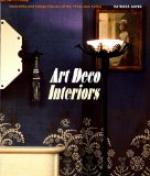In furniture, the epoch-making styles have been those showing line, and if decorated, then only with such decorations as were subservient to line; pure Greek and purest Roman, Gothic and early Renaissance, the best of the Louis, Directoire and First Empire, Chippendale, Adam, Sheraton and Heppelwhite.
The bad styles are those where ornamentations envelop and conceal line as in late Renaissance, the Italian Rococo, the Portuguese Barrocco (baroque), the curving and contorted degenerate forms of Louis XIV and XV and the Victorian—all examples of the same thing, i.e.: perfect line achieved, acclaimed, flattered, losing its head and going to the bad in extravagant exuberance of over-ornamentation.
There is a psychic connection between the outline of furniture and the inline of man.
Perfect line, chaste ornamentation, the elimination of the superfluous was the result of the Greek idea of restraint—self-control in all things and in all expression. The immense authority of the law-makers enforced simple austerity as the right and only setting for the daily life of an Athenian, worthy of the name. There were exceptions, but as a rule all citizens, regardless of their wealth and station, had impressed upon them the civic obligation to express their taste for the beautiful, in the erecting of public buildings in their city of Athens, monuments of perfect art, by God-like artists, Phidias, Apelles, and Praxiteles.
CHAPTER XV
CONTINUATION OF PERIODS IN FURNITURE
From Greece, culture, borne on the wings of the arts, moved on to Rome, and at first, Roman architecture and decoration reproduced only the classic Greek types; but, as Rome grew, her arts took on another and very different outline, showing how the history of decorative art is to a fascinating degree the history of customs and manners.
Rome became prosperous, greedy, powerful and imperious, enslaving the civilised world, and, not having the restraining laws of Greece, waxed luxurious and licentious, and chafed, in consequence, at the austere rigidity of the Greek style of furnishing.
We know that in the time of Augustus Caesar the Romans had wonderful furniture of the most costly kind, made from cedar, pine, elm, olive, ash, ilex, beach and maple, carved to represent the legs, feet, hoofs and heads of animals, as in earlier days was the fashion in Assyria, Egypt and Greece, while intricate carvings in relief, showed Greek subjects taken from mythology and legend. Caesar, it is related, owned a table costing a million sesterces ($40,000).
But gradually the pure line swerved, ever more and more influenced by the Orient, for Rome, always successful in war, had established colonies in the East. Soon Byzantine art reached Rome, bringing its arabesques and geometrical designs, its warm, glowing colours, soft cushions, gorgeous hangings, embroideries, and rich carpets. In fact all the glowing luxury that the new Roman craved.




